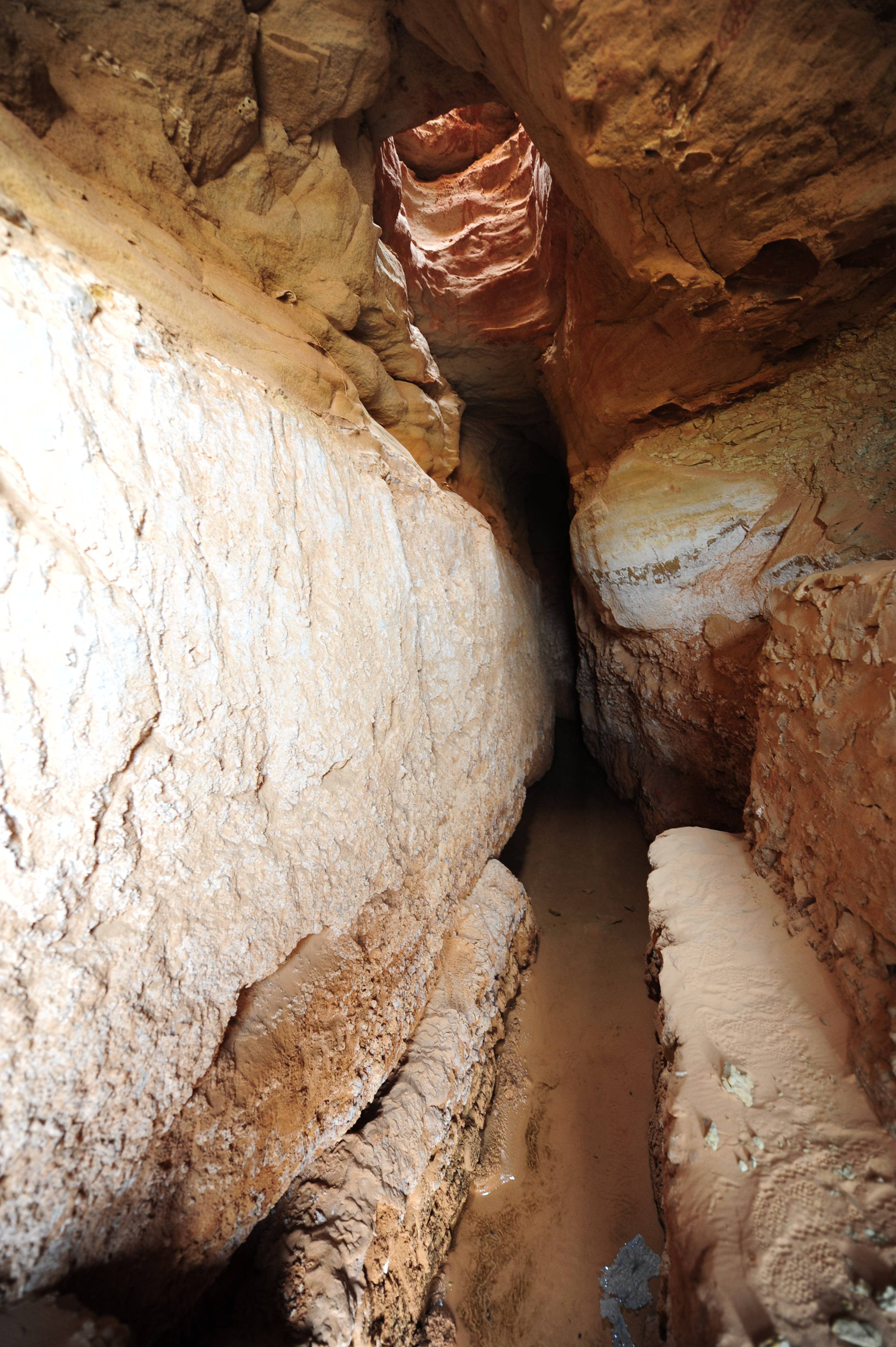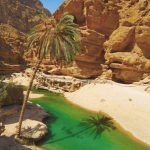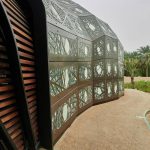Project O.A.S.I. , Ksar Amguid, Adrar :
Using the Foggara System to Irrigate Algerian Oases
Algeria’s Saharan oases illustrate marvelously how humans have managed to survive under hostile conditions. Down through the centuries an effective and sustainable irrigation system has been put in place that enables the inhabitants of the oases to live under the conditions of extreme aridity by respecting the special properties of these unstable ecosystems. Over the last few years, however, the Saharan oases have seen substantial demographic growth and increasingly intense agricultural production.
The inhabitants of the oases have tended to forget the traditional knowledge of this particularly fragile environment, principally as it concerns water resources. Modern methods of pumping groundwater, in particular, dry up the water table in an irreversible manner. This is why the restoration of the foggaras, traditional irrigation systems, is foreseen for the oasis of Touat, in southeastern Algeria.

The Saharan Oases
Most of the southern Algeria’s Saharan oases are marginal spaces. The climate is extremely arid, as there is no more than 50mm of rainfall annually.
Over the last few years, marked demographic growth has been accompanied by an intensification of agriculture, and the oases have been broadly affected by degradation of their water resources. The level and the rate of flow are diminishing from one day to the next. Most of these ruinous phenomena are the consequences of ill-conceived human practices that endanger the biodiversity of the Saharan regions.
Causes and Effects of Misguided Modernization
The intensification of irrigated farming in a fragile environment contributes to the improper use of natural resources. Cultivating increasingly large plots, the inhabitants of the oases have dug deep wells, introduced industrial products (such as chemical fertilizers) and, little by little, abandoned traditional knowledge.
In concrete terms, immense agricultural surfaces have been created for the production of cereals for export. These surfaces necessitate sprinkler systems, which are hardly suitable to the desert environment, as the degree of evaporation is very high. The level of the water table dangerously diminishes because of the direct pumping of water from great depth and in great quantity. The phenomena linked to modern, intensive use of water resources, the climatic extremes and the abandonment of traditional practices have upset the ecosystem’s complex and fragile balance. The water crisis is causing residents to leave the region; many oases have suffered desertification and invasion by sands; and ancient techniques used to catch water in catchment tunnels (foggaras) have been given up. The digging of modern wells to meet water needs has shrunken the water table.
Possible Solutions
The Adrar region of the Algerian desert (Willaya de Adrar) possesses numerous oases in a natural context that is unique in all the Sahara for its beauty and its excellent state of conservation. In this area, the presence of hundreds of thousands of palms, multiple systems of oases and ksurs (the traditional habitat), raw-earth villages and fortresses, make it possible to maintain a high degree of agricultural and cultural vitality.
The project, O.A.S.I., Ottenimento di Acqua nel Sahara Interno attraverso il restauro delle tecniche tradizionali delle gallerie drenanti e la valorizzazione delle conoscenze degli antichi maestri locali (Harvesting Water in the Inner Sahara by reinstating the traditional techniques of catchment tunnels and assessing the knowledge of local craftsmen) has been undertaken by Ipogea, with funds allocated by AATO–Laguna di Venezia to the “Fondo ABC” call to tender and in partnership with the Algerian Company Sud Timmi and the association for the protection of oases.
The project calls for the provision of water to an area subject to desertification via the restoration of a foggara, or catchment tunnel. The operation is being carried out with the participation of the farmers’ associations and their traditional Saharan water masters and is permitting local populations to return to the cultivation of palm trees and gardens and to reorganize a desert oasis that is now completely abandoned. The project shows how to assure the sustainable provision and use of water in the Sahara by bringing together the knowledge and traditions of local populations. The project a high-impact action in the Sahara and is replicable in other arid and semi-arid regions.
Activities to be carried out include:
• identifying situations that are critical in terms of water shortage and ecosystem degradation;
• organizing a participatory approach through existing partnerships and the promotion of the participation of the local community and local associations.
• analyzing traditional knowledge and techniques and developing innovative, sustainable and locally manageable procedures;
• training local actors with the aid of traditional craft associations;
• putting in place a pilot project for the restoration of catchment tunnels and traditional water-management systems;
• making innovative use of traditional techniques to solve the problems connected with waste waters and the management of water in cultivations and the rural habitat;
• documenting and publicizing experiences and reinforcing practices thanks to the participation of concerned local action groups (in projects termed “South to South”).

Conclusion
A barren and neglected desert area will produce a palm grove and cultivated fields. The experience of oasis inhabitants will shape a sustainable, self-created model that can be proposed to the whole planet as an example for the management of ecosystems and the harmonious and non-destructive use of resources.
AATO [/vc_column_text][/vc_column][/vc_row]








